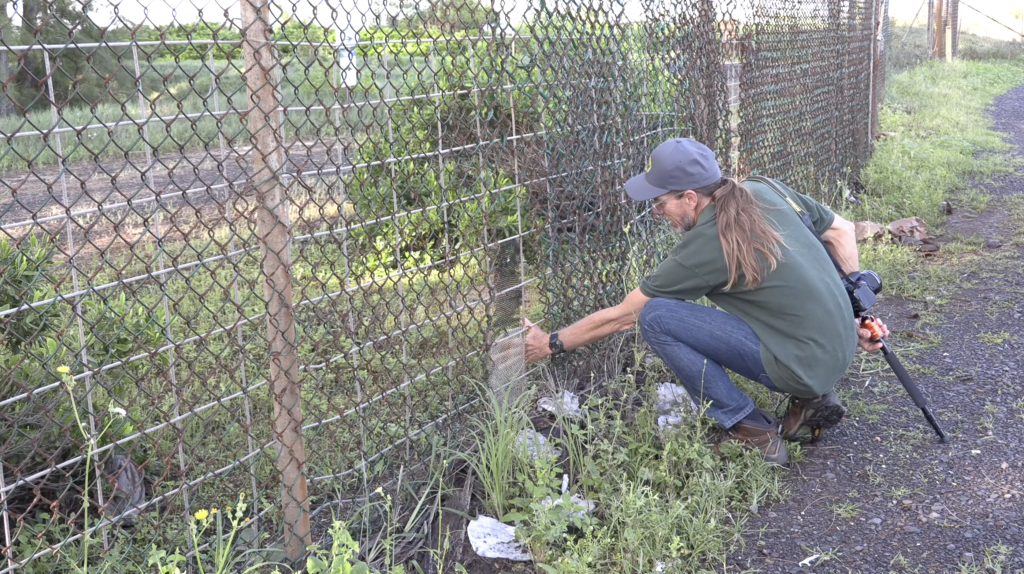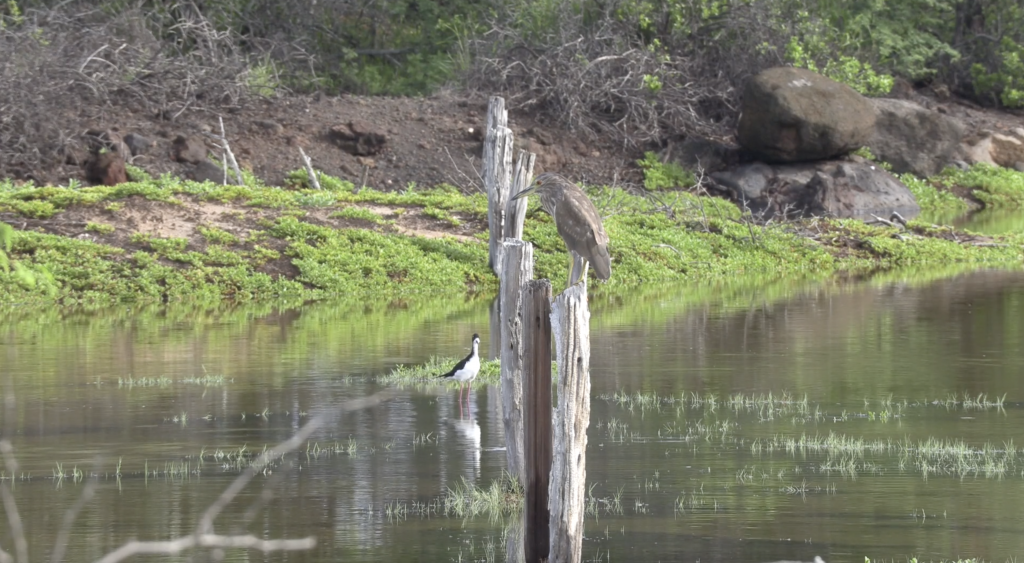Predator-proof fence installation begins at Kanahā Pond State Wildlife Sanctuary
Work is currently underway to replace an old, rusty fence that surrounds the sprawling Kanahā Pond State Wildlife Sanctuary on Maui. The old fending is being replaced with predator-proof fencing to keep rats, cats, mongoose, and dogs from attacking ground-nesting birds.
The current fence doesn’t keep axis deer out, as they can jump over it to feast on many of the 60 species of native plants at Kanahā Pond.
Kanahā is the oldest wetland managed by the DLNR Division of Forestry and Wildlife. It is unique; sandwiched between the ocean, a busy urban and commercial area, and an international airport.
Yet, despite all the noise and commotion, several species of endangered Hawaiian water birds continue to live and thrive in the ponds of the sanctuary. In addition, dozens of species of migratory birds inhabit the shallow waters and mud flats across the year.
“Kanahā used to be part of Kahului Harbor, it was just a sandy outlet,” explains Jeff Bagshaw of the DOFAW Maui Branch. “An early Maui king created fishponds and then during WWII, canals were put in to help drain flood waters from the Maui business district.” Wetlands help direct and soak up flood waters. And as, Bagshaw says, it’s a great place to get away from the hustle and bustle of city life to find some peace and quiet.
DOFAW’s Sasha Smith, the long-time caretaker at the wildlife sanctuary said, “The old fence is not only not working, but it’s deteriorated so much it is actually a hazard. It doesn’t keep anything out.” Bagshaw demonstrated numerous locations where he could stick his hand right through the fence.
The new fence, two and a half miles in length, will surround Kanahā. It has a hood or cover on top which makes it impossible for feral cats and other predators to climb over.
“It’s as much about keeping predators out, as keeping birds like nene in,” Smith said. Recently, and in the past, individual nēnē or entire families have gone through holes in the old fence and have been hit by cars. “The fence project is huge for that to help keep our bird families contained in the pond in a safe place.”
A small section of predator-proof fencing is complete, and posts are up to accommodate more. It is being funded by a federal grant from the US Fish and Wildlife Service National Coastal Wetlands Program and state funds allocated by the legislature. However, in the last year, costs for materials and labor have increased significantly beyond the current budget. As a result, DLNR is working to pursue additional funding to complete the fence around the entire perimeter of the Kanahā Pond State Wildlife Sanctuary.























